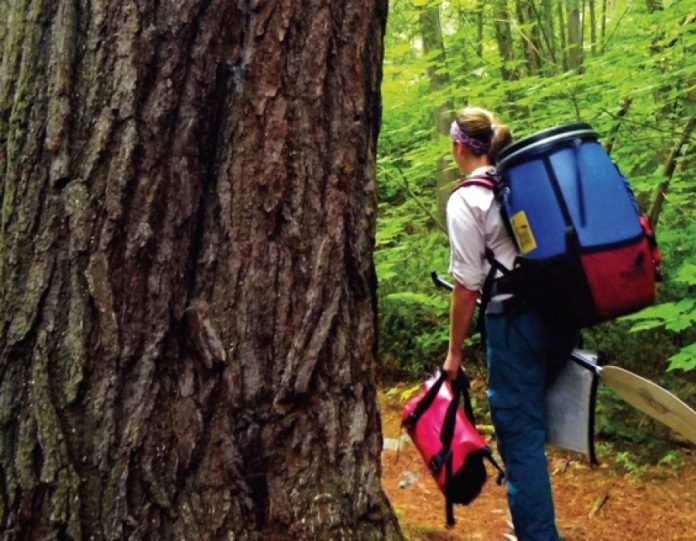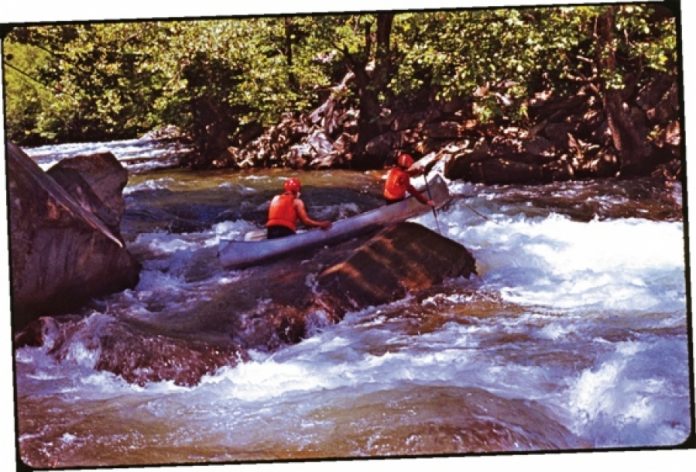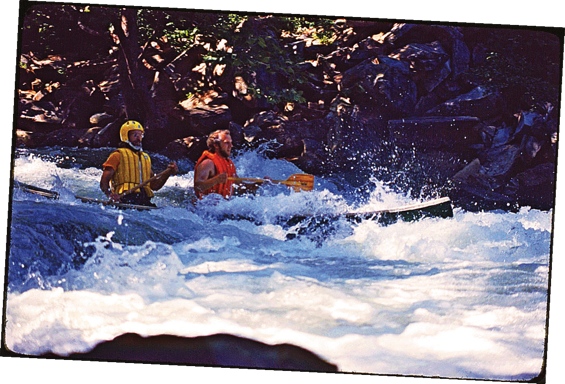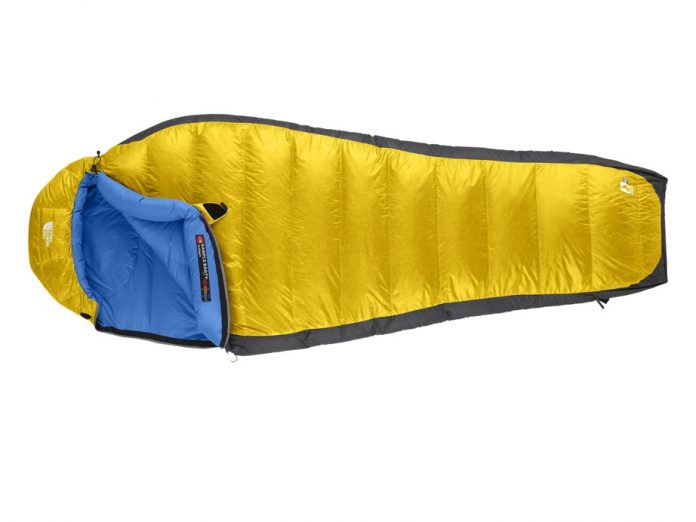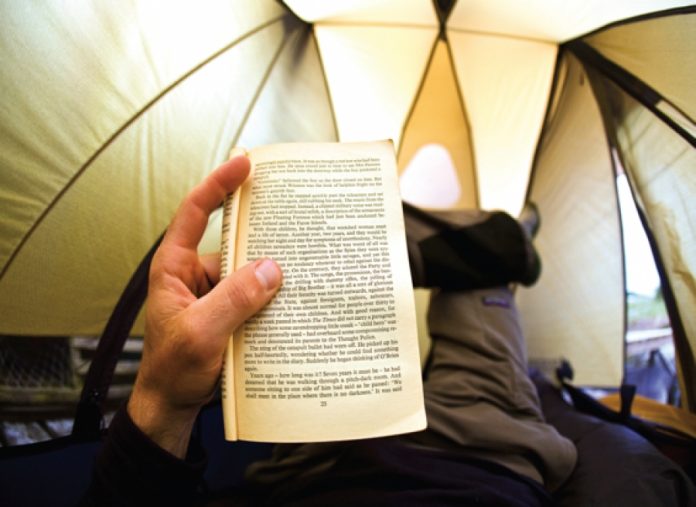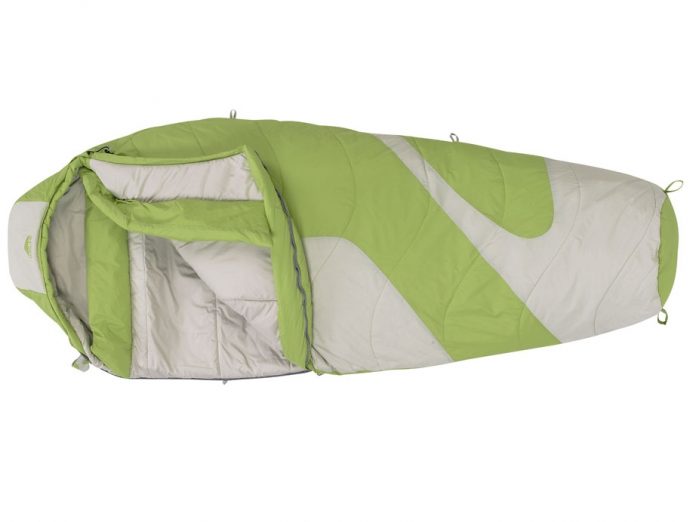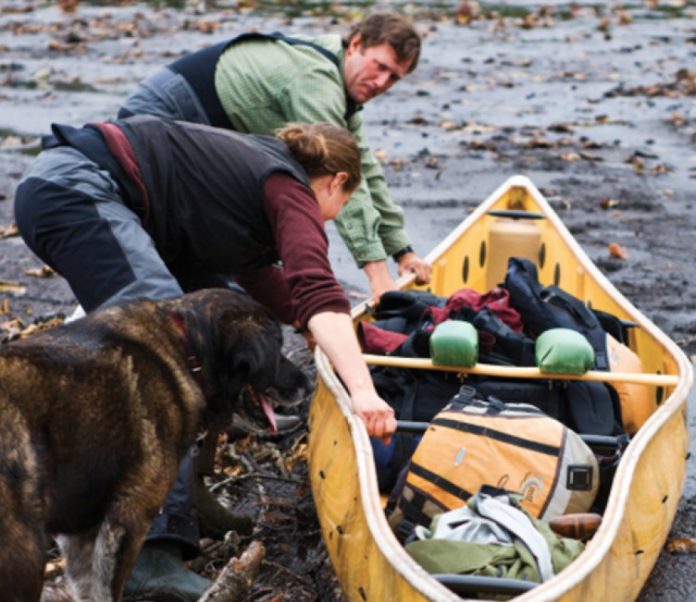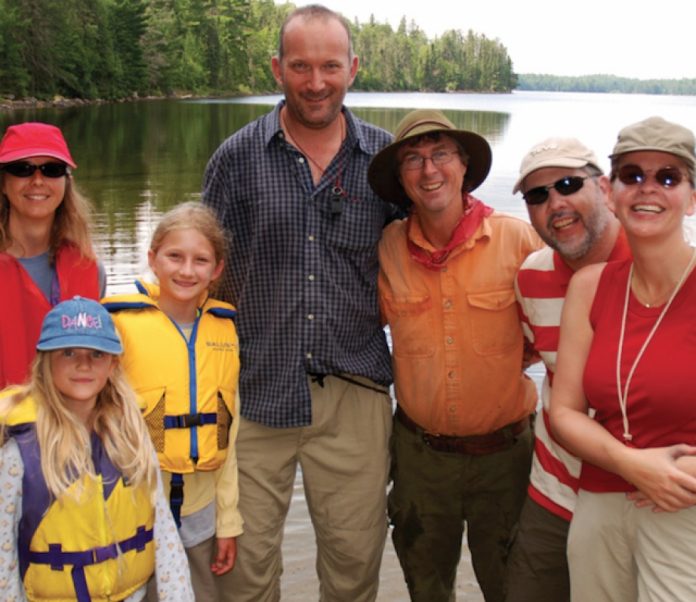Check out these PFDs and lifejackets for your dog from Ruffwear, reviewed by the Canoeroots team.
French River Canoe Trip
This is a Canoeroots Digital Extra Feature from the French River in Ontario, Canada. We spent 4 days with Black Feather enjoying this historic river, meeting families from all over the world and find out why they chose this river trip (and why you should too!).
Read more about family friendly river trips by clicking here.
Three-Hundred-Year-Old Temagami Red Pines At Risk
For longtime Temagami canoe-tripper Brian Back, the prospect of a new provincial park encompassing Wolf Lake, a Windex-clear lake surrounded by a stark quartzite shoreline and a forest of old growth red pine, was “almost a no-brainer.”
Wolf Lake is the scenic highlight of a canoe route weaving in and out of Chiniguchi Waterway Provincial Park, a 9,368-hectare protected area of lakes and small rivers east of Sudbury, Ontario. A Ministry of Natural Resources (MNR) report in 1990 concluded that Wolf Lake “may be the largest remaining contiguous, old-growth red pine dominated forest in North America,” with trees up to 300 years old. Summer camps have fl ocked to the area for decades, along with throngs of recreational canoeists looking for an easy escape.
Despite all this, Wolf Lake isn’t protected. Things looked promising in 1999 when Ontario’s Living Legacy, a government attempt to complete the province’s network of protected areas, established the Chiniguchi park and pegged Wolf Lake as a Forest Reserve—-essentially a park-in-waiting designation that allows mining but outlaws forestry.
Wolf Lake was expected to roll into the waterway park when pre-existing mining leases expired. That’s why Back, the founder of Ottertooth.com, a northeastern Ontario canoe-tripping and environmental website, was shocked
last summer to learn that the MNR planned to revoke Wolf Lake’s Forest Reserve status to more actively promote mineral exploration and, by association, open the area to commercial logging.
Back suspects it was pressure from the mining industry that caused the MNR’s sudden about-face. Developers don’t like parcels of land in regulatory limbo, says Back. Forest Reserve status doesn’t impede exploration activities for Flag Resources, the Calgary-based junior mining company with leases surrounding Wolf Lake, but the uncertain land designation can spook the investors it needs to fund its work.
Regardless of Flag Resources’ 30 years of exploration in the area having turned up no tangible prospects, MNR offered to exchange 340 hectares surrounding Wolf Lake for 2,000 hectares of protected land to be tacked onto the Chiniguchi park elsewhere. According to Bob Olajos, the secretary of the Friends of Temagami conservation group, this is hardly a fair trade. “What we have at Wolf Lake cannot be replicated elsewhere,” he says.
Surging public outcry put the heat on the provincial government to revisit the issue. Last December, the Friends of Temagami and its sister organization, Toronto-based Earthroots, spearheaded a campaign that barraged the provincial legislature with over 1,000 faxes opposing the government’s plans to scrap the Wolf Lake Forest Reserve. In February, 17 conservation organizations and businesses, including Friends of Temagami, Earthroots, Paddle Canada, Camp Keewaydin and the Canadian Parks and Wilderness Society, formed the Wolf Lake Coalition to push for its protection.
Minister of Natural Resources Michael Gravelle insists the province “struck a fair balance” when they decided to retain the Forest Reserve in March. Th is protects Wolf Lake from logging but keeps mining prospects alive.
“It’s the world’s largest old-growth red pine forest. Th at’s the hook,” says Olajos. “There’s a hole at Wolf Lake, right in the middle of this great forest. We want it protected.”
This story originally appeared on page 15 of the Early Summer issue of Canoeroots & Family Camping magazine. Read the entire issue here.
The North Face Gold Kazoo Gear Review
A review of the North Face Gold Kazoo Gear women’s three-season synthetic sleeping bag from Canoeroots & Family Camping magazine.
The Gold Kazoo is all about an impressive warmth-to-weight ratio—with a temperature rating around freezing thanks to its 650-fill Hungarian goose down, it weighs in at less than a full one-liter Nalgene. Both its ultra-lightweight rip stop nylon outer shell and nylon liner are extremely soft against your skin should you choose to peel back layers on a warm night. Panels of synthetic, anti-compression fill have been incorporated into the bag where your body typically contacts the ground—at the head, shoulders, hips and feet—improving wear and reducing heat loss. Paddlers should consider upgrading from the included compression stuff sack to something waterproof since the down fill won’t do its job if it gets wet.
30 °F (-1 °C); 2 lbs 1 oz (994 g); 17” x 6”; 650-fill Down
www.thenorthface.com | $230
A VIDEO REVIEW OF THE NORTH FACE GOLD KAZOO FROM CANOEROOTS MAGAZINE
This article originally appeared in Canoeroots & Family Camping, Early Summer 2012. Download our freeiPad/iPhone/iPod Touch App or Android App or read it here.
Kelty Designs Light Year Xp 20 W Gear Review
A review of the Kelty Designs Light Year Xp 20 W women’s three-season synthetic sleeping bag from Canoeroots & Family Camping magazine.
The Light year tapers gently to provide some of the warmth and weight savings of a mummy bag, without the constricted feel. It’s a women’s specific bag, shaped with less width at the shoulder and more room at the hip for even more comfort and efficiency. All that and a soft micro-fiber liner ensure a great night’s sleep, spring, summer and fall. The synthetic Climashield insulation stays warm even when it’s damp, making it ideal for tripping in any conditions. Details like the zippered chest pocket, sleeping pad security loops and included compression stuff sack add even more value to this well-priced bag.
20 °F (-7 °C); 3 lbs 4 oz (1474 g); 15” x 10”; Synthetic
www.kelty.com | $160
A VIDEO REVIEW OF THE KELTY DESIGNS LIGHT YEAR XP 20 W FROM CANOEROOTS MAGAZINE
This article originally appeared in Canoeroots & Family Camping, Early Summer 2012. Download our freeiPad/iPhone/iPod Touch App or Android App or read it here.
Snake River: Think the North is Out of Reach?
“This is where my ashes are going,” says guide Al Pace as we eddy out of the Snake River where Milk Creek pours its white, silt-laden water into the icy green flow of the Snake. Looking around the incredible canyon, with green-, orange- and grey-streaked mountains stretching off in all directions, he adds, “I haven’t found a prettier place.”
We’re five days into a trip down the Yukon’s class III Snake River—a trip that takes us 12 days, covers 300 kilometers and drops 1,100 meters. I was totally unprepared for this trip; I had no idea it would be so beautiful. Other than that, the guides take care of everything.
My buddies hate traveling with guides. And I understand it. Between us, we have decades of outdoor experience, some of it pretty risky (stupid, actually), but we’ve survived to this point. So what’s the point of tripping with an outfitter?
Well, the logistics of a trip on the Snake are staggering: researching and planning the route; booking shuttles, flights and rentals; gathering satellite phone, stoves, fuel, food, bear bangers, tents and boats; humping it all to the Territories and then cramming it into a floatplane is a daunting endeavor. It’s an incredible thing not having to worry about any of it.
I arrived in Norman Wells, Northwest Territories, without paddles, lifejacket, first aid kit, maps or even a dry bag. Canoe North Adventures supplied the barrel; I shoved all my stuff in it and stepped aboard a Twin Otter bound for Duo Lakes in the Yukon.
The Peel River watershed is an absolute gem of the Canadian North. The Wind, Bonnet Plume and Snake rivers are legendary experiences for good reason. Each offers a unique whitewater adventure in a pristine and vast wilderness. We spot caribou, grizzlies and mountain goats and even inexperienced fly fishers amongst us are catching Arctic grayling.
As we settle down around a campfire, complete with lawn chairs for all, one of Pace’s regular clients steps out of her tent, dressed in a bright pink boa, red satin gloves and oversized earrings. She’s calling herself Madame Zoom, and passes around a Nalgene of Black Russian. As she begins to read Robert Service’s Cremation of Sam McGee, everyone hushes, listening attentively.
The moment is radiant with a sense of privilege and largesse that I have only found in Canada’s North. The snowcapped Mackenzie Mountains tower over us as we contemplate all that is the Yukon and how it is changing us. When she reaches the final stanza we all join in, raising our glasses to the wilderness, and shout, “There are strange things done in the midnight sun!”
MAPS
www.fedmaps.com
GUIDEBOOK
Rivers of the Yukon, by Ken Madsen and Graham Wilson, Primrose Publications
READING
Three Rivers, forwarded by Juri Peepre, Harbour Publishing
OUTFITTERS
Canoe North Adventures, Norman Wells, NWT canoenorthadventures.com, 519-941-6654
Canadian River Expeditions, Whitehorse, Yukon nahanni.com, 867-668-3180
Black Feather, Seguin, Ontario blackfeather.com, 888-849-7668
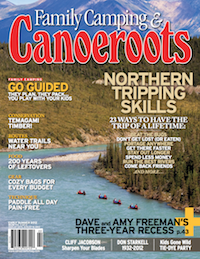
This article first appeared in the Early Summer 2012 issue of Canoeroots Magazine.



